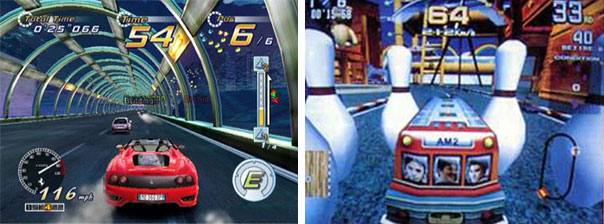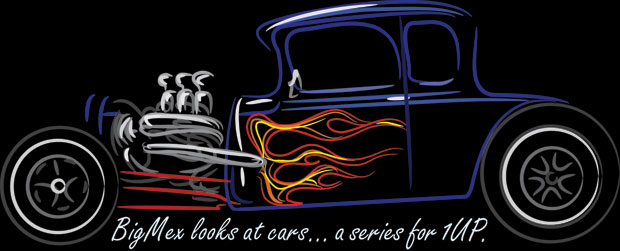Scud Race or Super GT as it was known over here was the pinnacle of AM2's arcade racing legacy. Sega golden boy Yu Suzuki had delivered the ultimate supercar experience. It had taken him almost 10 years to reach this point. The advances he had made to arcade racing along the way were unparalleled. Very few studios could have claimed to have developed a better series and no producer could have claimed a better team.

Scud Race was an arcade racer built around the GT class of cars. The GT in the title means Gran Turismo, or Grand Touring. It was a term that denoted mid-sized cars with big engines. In europe this breed became sports cars, in the US they were the forefathers of muscle cars. These were production cars that were designed with track racing in mind rather than taking the kids to school. The ones featured in Super GT represented the highest-end sports cars from around the world; the Porsche 911 GT2, Dodge Viper GTS-R, Ferrari F40 GTE and McLaren F1 GTR. These were specially modified racing versions of the production cars. The ones that every young boy dreams about owning some day. The cars for lottery winners and Hollywood jerks. Rather than let us lowly gamers dream about what it must feel like to handle these magnificent beasts Suzuki handed us the keys and let us go to town.
Super GT, like all of the Suzuki racing games, was about racing in style. His games had never been racing sims. The sim wasn't really what brought people into arcades. An arcade racer had to grab the player by the short hairs and go full throttle until the end. The illusion of speed, sliding inches around an opponent, flying dangerously close to the wall and being on the verge of a wreck each and every lap was what people craved. Suzuki, and the AM2 team at Sega excelled in giving us more of everything, more speed, more cars and more tracks than any other racer to-date. Scud Race even had an extra secret in the arcade. In Scud Race Plus there was an oval track presented in the middle of a house. The cars were all the scale of remote control racers on that track. If players put in a code the four cars could be substituted for four toys, well, three tin toys and one cat. The windows on the toy bus was plastered with pictures of AM2 employees. For the casual racing fan this game was an adrenaline overdose. For die-hard car fans this was heaven, at only 50¢ per play.

Yu Suzuki, like the best Japanese game designers, managed to turn his hobbies and interests into great games. He two automobile fetishes that he loved sharing. The first was his passion for the Ferrari and the second was his fascination with drifting. Each and every time Suzuki helmed a racer they seemed to have at least one of those things in it, if not both. The use of the drift in the Sega game polarizes most racing fans. They either loved it or hated it, never anything in between. Cars could careen around corners going completely sideways and somehow gain momentum this way, defying all logic as well as the laws of physics. Drivers that learned how to slide could find the best lines on a course. It was the only way to beat tracks and exactly how Suzuki had meant for them to enjoy the experience.
Of course of of this sliding wouldn't have amounted to much on any normal track. The true genius of Suzuki lay in his track designs. Courses that offered challenging lines and flat out speed. Speed that was exaggerated in the proportions and details of the crisp Model 3 graphics. Speed that was accented in hidden temples, awesome skyscrapers, opulent palaces, aquariums and wondrous freeways that flowed through the world. There have been thousands of incredible worlds presented to gamers for decades, some flat and some fleshed out. If you were to ask a racing fan which world they wished were real, which world they could inhabit then they'd probably say a Sega one.
Sadly Super GT was never ported to consoles, but the experience was not forgotten. The arcade courses were stitched together in a single flowing masterpiece as part of OutRun 2's bonus stage. Purists would say that the game following Super GT was the last great Sega arcade racer. That might indeed be true, please come back tomorrow to find out what that was.


No comments:
Post a Comment